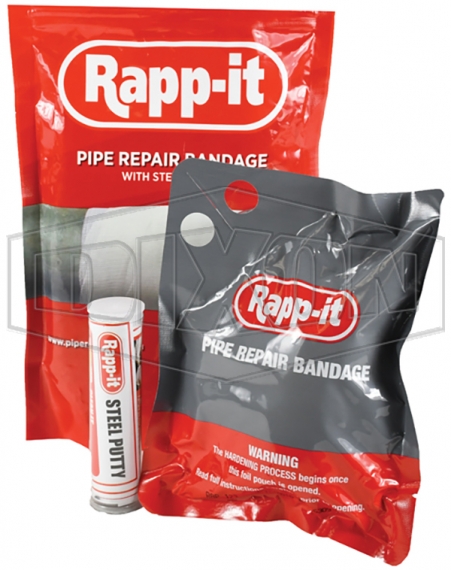Temporary/emergency pipe repair on leaking or damaged pipes


Log in to view pricing, inventory, place orders & much more. If you want to create an account, please click the button to begin the registration process.
Atributos
| Peso |
0.49 lb
|
|---|---|
| Break Quantity |
1
|
| Paquete Opcional/Cantidad por Caja |
1
|
| Medida |
2" x 12' (3.6 m)
|
| Material |
Poliuretano activado por agua
|
| Presión de Trabajo |
Material Brass Alloy C27450 per ASTM B16 PSI
|
| Usado en |
Se adhiere a la mayoría de las tuberías: acero, politubo, PVC, fibra de vidrio, cobre.
|
| Valor de Temperatura |
Detalles
Aplicaciones
Como funciona
Shut down pipes. Apply gloves, then thoroughly clean and roughen the damaged pipe area with a metal file or wire brush. A clean, rough surface results in a successful repair. Knead steel putty until it is a uniform grey color. Apply firmly to the damaged area within 2-5 minutes of mixing. Open the foil pouch and soak the bandage in freshwater for 10 seconds. Squeeze bandage 1-2 times while in the water to help activation. It is important to apply the bandage before the putty is cured. Quickly wrap the bandage around the damaged area, extending 50mm on either side of the leak. Pull each layer tightly and firmly throughout the application, using your hand to mold and squeeze the layers together in a tightening motion. Continue to squeeze the bandage with a rotating motion until resin stops foaming and is set. Allow a minimum of 30 minutes for Rapp-it bandage to set rock hard.
Incluye
Especificaciones
- Both Rapp-it Bandage and Rapp-it Steel Putty are compliant with Australian Standard (AS/NZS 4020:2005).
- Rapp-it Steel Putty is compliant with the equivalent US Standard, NSF 61.
Uso
Recursos



 EU | es
EU | es
